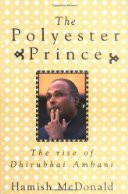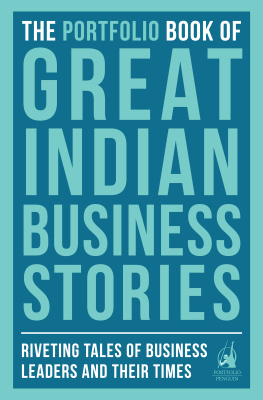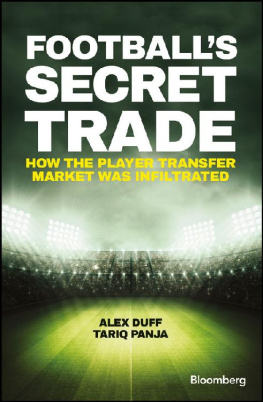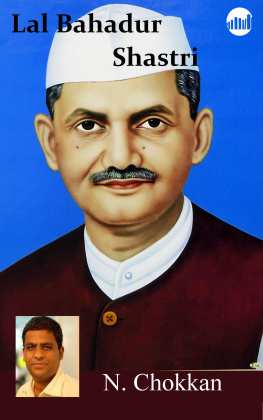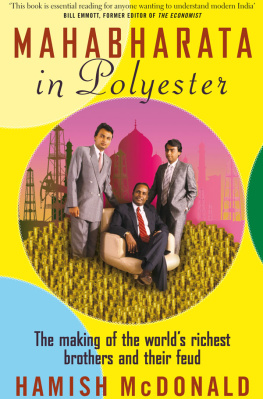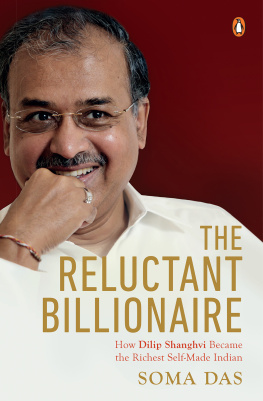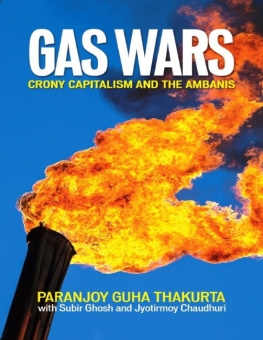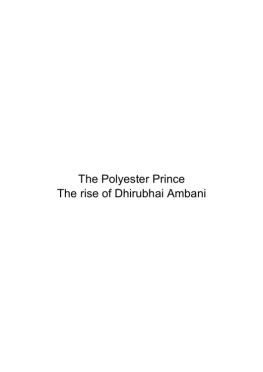The Polyester Prince
The rise of Dhirubhai Ambani
INTRODUCTION:
AN INVITATION
TO BOMBAY
The envelope was hand-delivered to our house in Golf Links, Tan enclave in New Delhi whose name
captured the clubbable lifestyle of its leisured and propertied Indian residents, soon after we had arrived in
the middle of a north Indian winter to begin a long assignment. It contained a large card, with a picture
embossed in red and gold of the elephant-headed deity Ganesh, improbably carried on the back of a
much smaller mouse. Dhirubhai and Kokilaben Ambani invited us to the wedding of their son Anil to Tina
Munim in Bombay.
In January 1991, just prior to the explosion in car ownership that in later winters kept the midday
warmth trapped in a throat-tearing haze overnight, it was bitterly cold most of the time in Delhi. Our
furniture had stil not arrived-a day of negotiations about the duty payable lay ahead at the Delhi customs
office where the container was broken open and inspected-and we camped on office chairs and fold-up
beds, wrapped in blankets.
The Indian story was also in a state of suspension, waiting for something to happen. The Gulf War,
which we watched at a big hotel on this new thing called satel ite television, was under- cutting many of the
assumptions on which the Congress Party's family dynasty, the Nehrus and Gandhis, had built up the
Indian state. The Americans were unleashing a new generation of weap- ons on a Third World regime to
which New Delhi had been close; its Soviet friends were standing by, even agreeing with the Americans.
The Iraqi invasion of Kuwalt had pushed up oil prices and forced the Indian Government to evacuate
some three mil ion of its citizens working in the Gulf. The extra half-bil ion dollars all this cost India was
pushing the country close to default on its foreign debt. Officials from the Ministry of Finance were already
negotiating a bail-out from the IMF in Washington; the IMF was setting stiff 'conditionalities'-in effect a
complete shift from Nehru's model of high external protection for the economy and government al ocation
of savings. Even the CNN clips of Tomahawk cruise missiles zipping neatly down the streets of Baghdad
were in themselves part of another breach in India's walls. The clites who ran the national TV monopoly or
the big newspapers no longer had India's half-il iterate population to
themselves.
Little of this was admitted in New Delhi. The coalition government of V P Singh, which had swept
out the glamorous Rajiv Gandhi on a battery of corruption scandals, had itself collapsed in November after
less than a year in office. India was ruled by an even smaller coalition of opportunists under a wily politico
called Chandrashekhar, kept in office at Rajiv's pleasure for who knew how long. Everyone clung to the
autarkic, Third World verities. Politicians and journalists pounced on the slightest admission by their
fellows that perhaps India's vision of the world had been flawed and it had better adjust to the new order.
At the Ministry of External Affairs, in the red sandstone majesty of Sir Herbert Baker's Secretariat
buildings, a bright young official on a new economic desk assured me that India's finances were strong
enough to take the strains. At a party of intel ectuals' young academics and filmmakers in rough cotton
kurta-payjama suits scoffed at the prospects for satellite TV. How would the advertising payments get out
to the broadcaster through the maze of foreign exchange controls? Which foreign companies would want
to plug products they could neither export to India nor make local y?
The wedding invitation was a good excuse to break away from this stalemate in New Delhi, and make
contact with the Indian commercial class in Bombay. There it looked as if a raw entrepreneurial spirit was
straining to break through the discouraging political crust. Word of the Ambani family and their company
Reliance Industries had spread to Hong Kong as prime examples of this brash new India which might
final y have its day, courtesy of the changes the Gulf War symbolised.
Everything about the Ambanis, in fact, was a good magazine story The young couple's courtship had
been a stormy one, ready-made for the Bombay show-biz magazines. The bride, Tina Munim, was a girl
with a past. She had been a film starlet, featuring in several of the Hindi-language films churned out by the
hundreds every year in 'Bol ywood'-most including improb- able violence, song-and-dance routines, and
long sequences with the female leads in wet, clingy clothes. Before meeting Anil, Tina had had a heavy,
wel -publicised affair with a much older actor. The groom, Anil, was the tearaway one of the two Ambani
boys. His parents had frowned on the match. Bombay's magnates usual y tried to arrange matches that
cemented alliances with other powerful business or political families. This one was not arranged, nor did it
bring any more than a certain popularity. Hired assailants had been sent with acid and knives to scar
Tina's face, so went the gossip (apocryphal: Tina's face turned out to be flawless). Anil had threatened
suicide if he could not marry Tina, went another rumour. Final y, the parents had agreed.
The father, Dhirubhai, was no less colourful and even more controversial. He had first worked in Aden
in the 1950s. I recalled a stopover there in my childhood, aboard the S. S. Oronsay, a buff-hul ed Orient
Line ship, en route to my father's posting in London with his Australian bank in 1958. The image was of
grim, dark-brown peaks surrounding a harbour of bril iant blue, a host of merchant ships tied up to
moorings, and a busy traffic of launches and barges. The trip ashore was by launch, landing at Steamer
Point, where Arabs and Indians besieged the white faces, trying to sell us Ottoman-style cushions or to
drag us into their duty-free shops. Now someone like those desperate salesmen in Aden was a tycoon in
Bombay.
Ambani had got into polyester manufacturing in a big way, and got huge numbers of Indians to invest in
shares of his company, Reliance Industries. In India, the home of fine cotton textiles, it seemed that people
couldn't get enough polyester. The only constraint on local producers like Reliance was the government's
licensing of their capacity, or where they built their factories. To jack up his capacity, Ambani had become
a big political fixer. In the recent minority government formation, it was said, his executives had been
shuttling briefcases of cash to politicos all over Delhi. There had been epic battles, with the press baron
Ramnath Goenka of the Indian Express and with a textile rival from an old Parsi business house, Nusli
Wadia. A year or so earlier, a Reliance public relations manager had been arrested for plotting to murder
Wadia. The man had been released, and nothing was moving in the case. Was it genuine or a frame-up?
Indian colleagues were not sure: no conspiracy was accepted at face value.
So we took our first trip inside India, making our way down to New Delhi Railway Station in a yellow-and-black cab, one of the 1954 Morris Oxford design stil being made in Calcutta, in the rose-coloured
haze of a winter afternoon; letting a red-shirted porter heave our bags on his head and lead us to the
train, establishing our rights to the coveted two-berth compartment in the middle of the First Class AirConditioned carriage from the list pasted by the door.
The train slid across the flat beige northern landscape of wheat-stubble and square houses as night fell.
Next page
